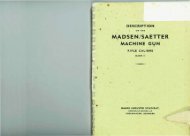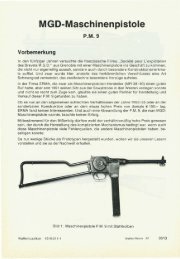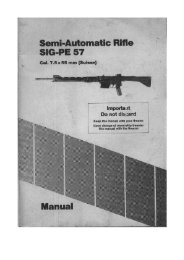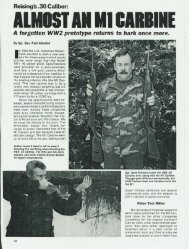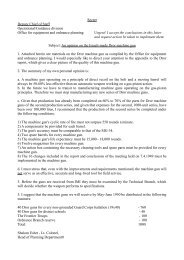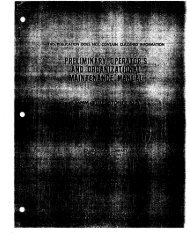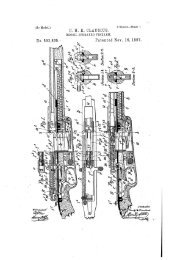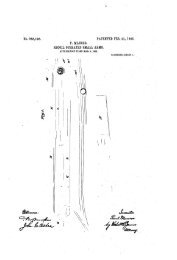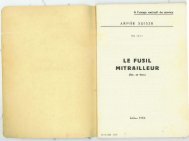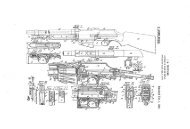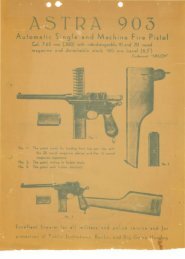PK Series Manual (English, 2005) - Forgotten Weapons
PK Series Manual (English, 2005) - Forgotten Weapons
PK Series Manual (English, 2005) - Forgotten Weapons
Create successful ePaper yourself
Turn your PDF publications into a flip-book with our unique Google optimized e-Paper software.
M1908 7.62 x 54R-mm Ammunition Headstamps.<br />
The stamped markings that appear on a cartridge case base are termed the<br />
headstamp. The only general statement that can be made regarding cartridge<br />
headstamps is that the range of data that they can present is extremely varied. At a<br />
minimum, military cartridge headstamps normally identify the producer and the year of<br />
production. Either or both of these elements may consist of an abbreviation, a letter<br />
code, a numeric code, or an arbitrary symbol that is significant only to the producer.<br />
The term “producer” is to be interpreted broadly; it may identify the plant that produced<br />
the ammunition, or it may identify the country by which (or for which) the ammunition<br />
was made, with a separate mark to identify the factory. Other markings may identify the<br />
month, quarter, or lot number of production; cartridge caliber; cartridge case material or<br />
case construction; or functional bullet type. Marks that appear to serve merely design<br />
or decorative purposes, such as stars, dots, or arcs, frequently have a specific meaning<br />
for the producer or the intended user.<br />
The term “design element” indicates bits of information that may be found together in a<br />
headstamp. If only one element, such as “7.62-mm” is present, this is termed a singleelement<br />
headstamp; if two elements, such as “7.62-mm” and “3-94” are present, this is<br />
termed a two-element headstamp, and so on.<br />
The location of the design elements can be indicated in either of two ways, depending<br />
on which is most convenient for the cartridge case at hand: either by its clock-face<br />
orientation, in which 12 o’clock is at the top, 3 o’clock is to the right, and so on, or by the<br />
angular orientation. For example, a two-element headstamp with one element at 12<br />
o’clock and the other at 6 o’clock or on at 3 o’clock and the other at 9 o’clock would be<br />
termed a 2 x 180 pattern; if three elements were distributed equidistantly, it would be<br />
termed a 3 x 120 pattern (see figures 8-4 8-12).<br />
Some headstamp designs include one or two segment lines that divide the cartridge<br />
base into either two or four equal parts or fields in which marking may or may not<br />
appear. Segment lines are a design feature that was relatively popular in Europe up to<br />
the 1920s, but has since gradually gone out of use; very few producers still follow this<br />
practice.<br />
UNCLASSIFIED<br />
VIII - 5




